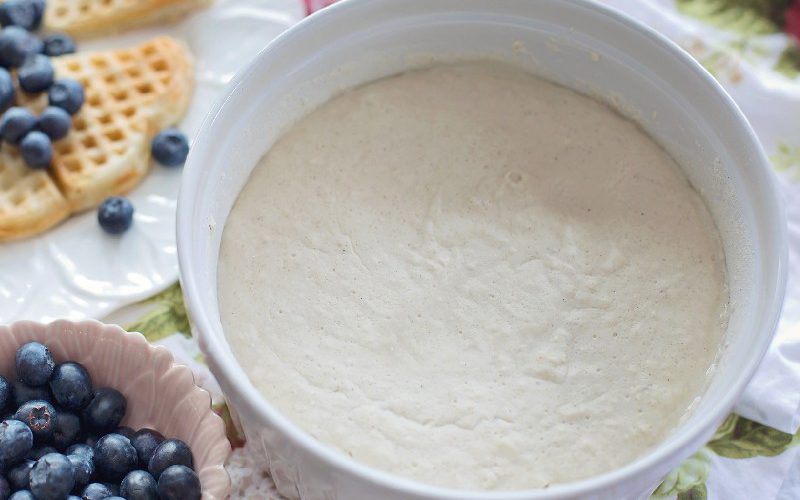It’s a sourdough starter. You’ve been feeding it, getting all excited about the sourdough recipe you’re going to make this weekend, and then…it sinks! Why a sourdough starter sinks? There are many reasons why your sourdough starter might be sinking in water, but don’t worry because we have a list of possible solutions for you here.
How the float test works
The float test is a really cool way to see how your sourdough starter has been doing. One of the telltale signs that there is active yeast and bacteria in a starter is that it should form bubbles. If these aren’t present then either your starter isn’t fermenting enough or it could due to something else.
Why a starter does not float in water?
Too much flour
Your starter might have too much flour. Feeding sourdough starters requires a lot of hydration, so if you’re feeding your sourdough starter with dry ingredients like all-purpose or bread flour then it’s likely that the dough is going to be too dense and will sink when submerged in water. Try adding some additional liquid until
Over rising
Sometimes the starter becomes too acidic and can’t rise. This is often caused by overfeeding, but some starters may not be strong enough to recover from this acidity. The more active a starter’s activity has been before an incident of over-feeding occurs, the better it will handle these mistakes in feeding patterns; otherwise, it could collapse without ever seeming like something was wrong with its gluten network or temperature levels when compared to other healthy starts that would have trouble maintaining their shape at all after being fed incorrectly for hours on end!
It needs longer to rise
Starting a starter can be frustrating. But don’t worry, there are plenty of ways to help your baby grow up strong and sturdy! One trick is just waiting–sometimes you may need more time for the yeast in that mixture to mature enough before adding it into bread dough or other recipes (which usually involve water). If this doesn’t work, then try giving the starter its daily feedings one day at a time instead of all together. This allows some extra food-building nutrients to get absorbed by those hungry little yeast cells so they’ll have what they need when you’re ready to bake again!
How do I know if my sourdough starter is ready to use?
It’s not always easy to tell if your sourdough starter is ready for baking, but there are a few signs that it might need more time before you try any recipes with water.
A starter is full of life and energy! Bubbles are an excellent indicator that the maturing process has begun. The unmistakable sour smell indicates a mature, yet tangy taste with just enough kick to make it interesting. If you can see bubbles on top of your dough then give it time- soon you will be able to enjoy this tasty treat every day!
Conclusion
A sourdough starter sinks in water for several reasons, but the poke test isn’t always accurate. Let me know in the comments if I can help you further.
